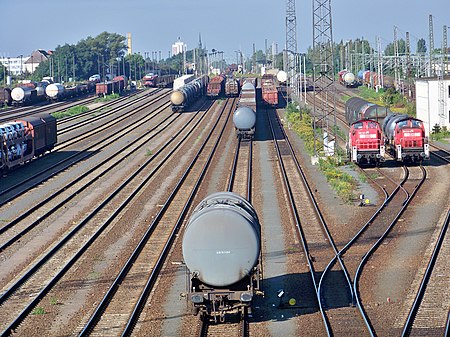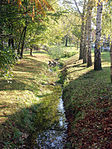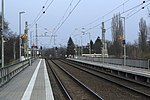Leipzig-Engelsdorf marshalling yard
Railway stations in Germany opened in 1906Railway stations in Leipzig

Leipzig-Engelsdorf marshalling yard (Bahnhof Leipzig-Engelsdorf) is the central marshalling yard in the Leipzig rail node in the German state of Saxony. Until it was closed in 1994, there was also a marshalling yard at Leipzig-Wahren station. It is located on the Leipzig–Dresden, Engelsdorf–Leipzig-Connewitz and Leipzig-Wahren–Engelsdorf railways in the Leipzig suburb of Engelsdorf. The halts of Leipzig Werkstättenstraße (on the Leipzig–Geithain railway) and Leipzig-Engelsdorf Hp (Haltepunkte, on the Leipzig–Dresden railway) are located in the marshalling yard area. It was called Bahnhof Engelsdorf (b Leipzig) until December 2016.
Excerpt from the Wikipedia article Leipzig-Engelsdorf marshalling yard (License: CC BY-SA 3.0, Authors, Images).Leipzig-Engelsdorf marshalling yard
Alte Schmiede, Leipzig Paunsdorf (Ost)
Geographical coordinates (GPS) Address Nearby Places Show on map
Geographical coordinates (GPS)
| Latitude | Longitude |
|---|---|
| N 51.344 ° | E 12.4696 ° |
Address
Engelsdorf B8
Alte Schmiede
04319 Leipzig, Paunsdorf (Ost)
Saxony, Germany
Open on Google Maps











